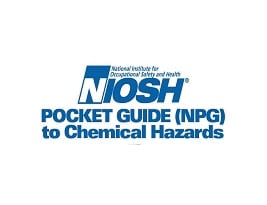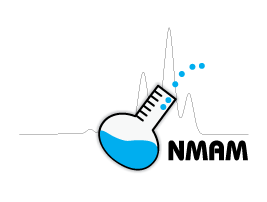Chlorine

Overview
CAS No. 7782-50-5
Chlorine (Cl₂) is a greenish-yellow gas with a pungent, irritating odor. Exposure to low levels of chlorine can result in nose, throat, and eye irritation. At higher levels, breathing chlorine gas may result in changes in breathing rate and coughing, and damage to the lungs. Additional symptoms of exposure to chlorine can be severe. Workers may be harmed from exposure to chlorine. The level of exposure depends upon the dose, duration, and work being done.
Chlorine is used in many industries. It’s used in the pulp and paper industries, pool chemical products, cleaning products, mining products, bleach and plastics manufacturing. Some examples of workers at risk of being exposed to chlorine include the following:
- Workers in water treatment and sewage facilities
- Agricultural workers who clean livestock facilities, such as dairy farms
- Workers who clean pools
- Janitorial workers who use cleaning products
- Factory workers in bleach and plastic manufacturing
NIOSH recommends that employers use Hierarchy of Controls to prevent injuries. If you work in an industry that uses chlorine, please read chemical labels and the accompanying Safety Data Sheet for hazard information. Visit NIOSH’s page on Managing Chemical Safety in the Workplace to learn more about controlling chemical workplace exposures.
The following resources provide information about occupational exposure to chlorine. A useful search terms for chlorine include “molecular chlorine.”
NIOSH Chemical Resources
Related NIOSH Resources
- Documentation for Immediately Dangerous to Life or Health (IDLH) Value Profile: Chlorine—Documents the criteria and information sources that have been used by NIOSH to determine immediately dangerous to life or health concentrations.
- NIOSHTIC-2 search results on Chlorine—NIOSHTIC-2 is a searchable database of worker safety and health publications, documents, grant reports, and journal articles supported in whole or in part by NIOSH.
- NIOSH Worker Health Study Summaries—NIOSH conducts research to prevent illnesses and injuries in the workplace. The NIOSH Worker Notification Program notifies workers and other stakeholders about the findings of these research studies.
Selected Publications
- NIOSH Criteria Documents: Criteria for a Recommended Standard: Occupational Exposure to Chlorine—DHHS (NIOSH) No. 76-170 Contains a recommended standard for mitigation of exposure to Chlorine to prevent adverse effects over a working lifetime.
- Immediately Dangerous to Life or Health Value Profile: Chlorine Pentafluoride—DHHS (NIOSH) No 2016-170
Related Resources
- Agency for Toxic Substances Disease Registry (ATSDR) Medical Management Guidelines (MMGs): Chlorine
- ATSDR – ToxFAQs: Chlorine
- ATSDR Toxicological Profile for Chlorine
- CDC Emergency Preparedness and Response – Chlorine
- EPA Chemistry Dashboard: Chlorine
- EPA Acute Exposure Guideline Levels (AEGLs): Chlorine
- EPA Chemical Fact Sheets: Chlorine
- EPA Integrated Risk Information System (IRIS): Chlorine
- OSHA Safety and Health Topics: Chlorine
- OSHA Guideline for Chlorine
- OSHA Hazard Communication website
- NLM Hazardous Substance Data Bank: Chlorine
- NLM Haz-Map: Chlorine
- NLM Household Products Database: Chlorine
- NLM Medline Plus: Chlorine Poisoning
- New Jersey’s Hazardous Substance Fact Sheets: Chlorine



